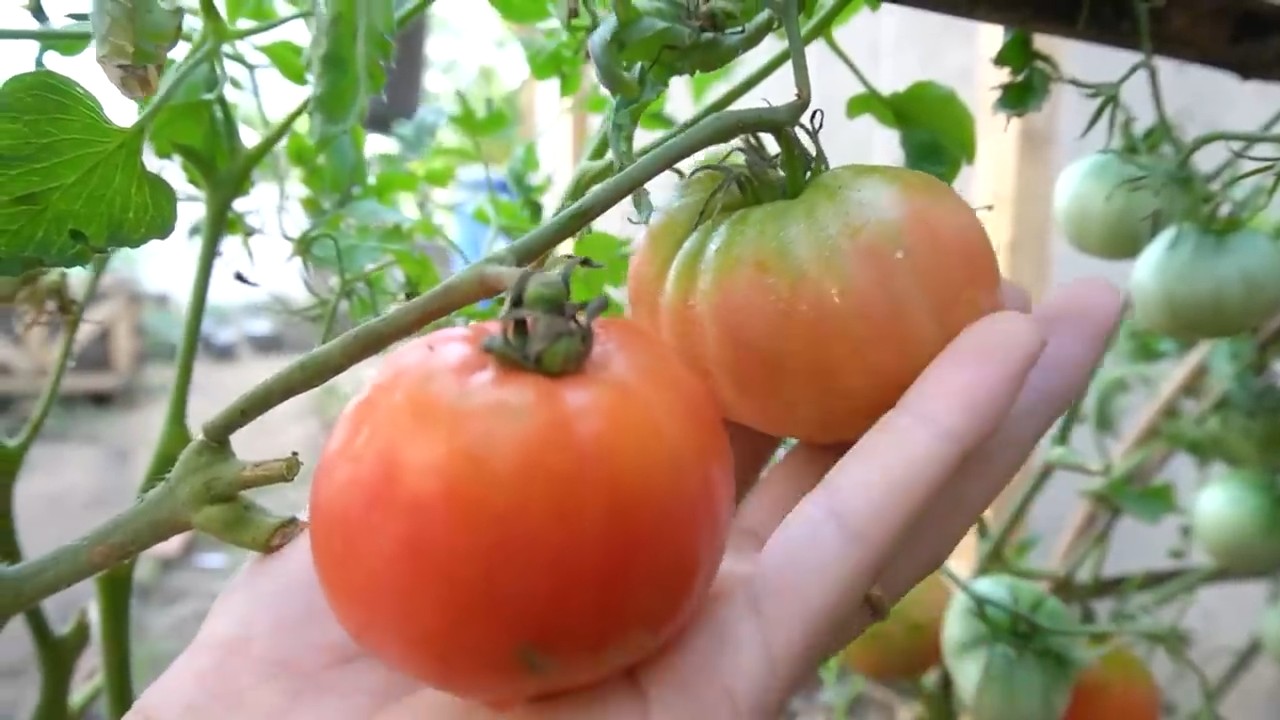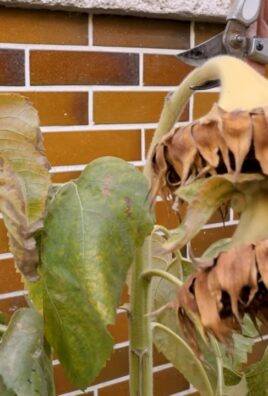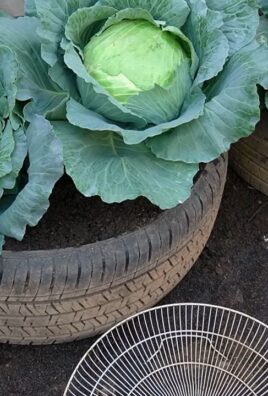Grow tomatoes at home, even if you think you have a black thumb! Let’s face it, there’s nothing quite like the taste of a sun-ripened, juicy tomato fresh from your own garden. Forget those bland, store-bought imitations – we’re talking about the real deal, bursting with flavor and packed with nutrients. For centuries, tomatoes have been a staple in cuisines around the world, from the vibrant sauces of Italy to the refreshing salsas of Mexico. They’ve become a symbol of summer, abundance, and the simple pleasures of life.
But what if you don’t have a sprawling backyard? Or maybe you’re just intimidated by the thought of gardening? Don’t worry, I’m here to tell you that growing your own delicious tomatoes is easier than you think! This DIY guide is packed with simple, effective tricks and hacks that will help you grow tomatoes at home, no matter your experience level or space constraints. We’ll cover everything from choosing the right varieties for container gardening to maximizing your yield with clever watering techniques.
Imagine biting into a perfectly ripe tomato that you nurtured from a tiny seed. The satisfaction is unparalleled! Plus, you’ll know exactly what went into growing it – no harmful pesticides or mystery ingredients. So, ditch the grocery store tomatoes and get ready to embark on a rewarding journey of homegrown goodness. Let’s get started!

Growing Tomatoes at Home: Your Comprehensive DIY Guide
Hello, fellow gardeners! I am thrilled to introduce you to the wonderful world of growing tomatoes at home today. There is almost nothing more satisfying than harvesting a juicy, sun-ripened tomato from your own garden. And the best part? It’s easier than you might think! Whether you have a large garden, a small balcony, or just a sunny windowsill, there’s a way for you to grow your own tomatoes. Let’s get started together!
The Basics: What Tomatoes Need to Grow
Before we dive into the details, let’s briefly discuss the most important needs of our tomato plants. They are a bit demanding, but if you give them what they need, they will reward you with a bountiful harvest.
- Sun: Tomatoes love the sun! They need at least 6-8 hours of direct sunlight per day. The more, the better.
- Water: Regular watering is crucial, especially during fruit formation. Make sure the soil is consistently moist but not waterlogged.
- Nutrients: Tomatoes are heavy feeders. This means they need a lot of nutrients to grow well and produce a lot of fruit. A good tomato fertilizer is worth its weight in gold here.
- Support: Many tomato varieties grow quite tall and need support to keep from breaking. Tomato stakes, trellises, or cages are ideal for this.
- Warmth: Tomatoes are heat-loving. They do not like cold temperatures or frost.
Step-by-Step Guide: Growing Tomatoes Yourself
Now let’s get down to business! Here is a detailed guide on how you can grow your own tomato plants from scratch.
Phase 1: Sowing the Seeds
- Choose your tomato variety: There are countless tomato varieties, from small cherry tomatoes to huge beefsteak tomatoes. Think about which variety you like best and which is suitable for the space you have. Research the characteristics of different varieties, such as disease resistance or ripening time.
- Get the right seeds: You can buy tomato seeds at a garden center, online, or even harvest them from a ripe tomato. If you harvest seeds from a tomato, make sure it is an open-pollinated (heirloom) variety so that the offspring have the same characteristics.
- Prepare the starter pots: Fill small seedling pots or a seed tray with seed-starting mix. This soil is low in nutrients and loose, which is ideal for germination.
- Sow the seeds: Place 2-3 seeds per pot about 0.5-1 cm (0.2-0.4 inches) deep in the soil. Cover them lightly with soil and gently moisten the soil with a spray bottle.
- Create a warm and humid climate: Place the seedling pots in a warm place (approx. 20-25°C / 68-77°F) and cover them with a clear plastic wrap or a lid to increase humidity. Briefly air out the cover daily to prevent mold.
- Patience is key: The first seedlings should appear after about 7-14 days. Once the seedlings are there, remove the cover and place the pots in a bright spot, such as on a windowsill.
Phase 2: Rearing the Seedlings
- Pricking out: Once the seedlings have developed their first true leaves (besides the initial seed leaves), it’s time to prick them out. This means you carefully take the individual plantlets out of the pots and transplant them into larger pots (approx. 8-10 cm / 3-4 inches in diameter). Be careful not to damage the roots.
- The right soil: For the larger pots, use a good quality tomato soil or a mixture of garden soil, compost, and sand.
- Watering and fertilizing: Water the seedlings regularly, but avoid waterlogging. Start fertilizing with a liquid tomato fertilizer after about 2 weeks. Follow the dosage instructions on the packaging.
- Light and temperature: Place the seedlings in a bright and warm location. Rotate the pots regularly so that the plants grow evenly and do not bend towards the light.
- Hardening off: Before you plant the tomato plants outdoors, you must harden them off. This means you slowly acclimate them to outdoor conditions. To do this, place them outside for a few hours during the day and bring them back in at night. Increase the time they spend outdoors each day until the plants can finally stay outside all day.
Phase 3: Planting Out
- The right time: Tomatoes are sensitive to frost. Wait to plant them outdoors until there is no more danger of frost. This is usually in mid-May, after the last frost date.
- The right location: Choose a sunny and sheltered location for your tomato plants. The soil should be loose, well-draining, and rich in nutrients.
- Preparing the soil: Dig a sufficiently large planting hole and loosen the soil well. Mix some compost or organic fertilizer into the planting hole.
- Planting out: Plant the tomato plants deep in the soil, so that the lowest leaves are just above the ground. This encourages root formation and makes the plants more stable.
- Watering and fertilizing: Water the plants thoroughly after planting and fertilize them regularly with a tomato fertilizer.
Care: How to Keep Your Tomatoes Healthy and Productive
The work isn’t done yet! Now it’s about taking good care of your tomato plants so they stay healthy and produce lots of delicious fruit.
- Watering: Water the tomato plants regularly, especially during fruit formation. Avoid watering the leaves, as this can promote diseases. It’s best to water in the morning so the plants can dry off during the day.
- Fertilizing: Fertilize the tomato plants regularly with a tomato fertilizer. Make sure the fertilizer contains enough potassium, as this promotes fruit development.
- Pruning suckers: Many tomato varieties form so-called “suckers.” These are side shoots that grow in the leaf axils. These shoots take unnecessary energy from the plant and should be regularly removed. Simply break off the suckers with your fingers while they are still small.
- Supporting: Tomato plants need support to keep from breaking. Use tomato stakes, trellises, or cages to support the plants.
- Diseases and pests: Watch for signs of diseases or pests. If necessary, you can use organic pesticides. Late blight is a common tomato disease caused by fungi. As a preventive measure, you can treat the plants with an appropriate spray.
- Harvesting: The tomatoes are ripe when they have their typical color and can be easily detached from the stem. Harvest the tomatoes regularly to encourage the plant to produce new fruit.
Additional Tips for Growing Tomatoes
Companion Planting: Plant basil next to your tomatoes. Basil is said to repel pests and improve the flavor of the tomatoes.
Mulching: Mulch the soil around the tomato plants with straw or grass clippings. This keeps the soil moist, suppresses weeds, and protects the fruit from dirt.

Conclusion
So, there you have it! Growing tomatoes at home isn’t just a rewarding hobby; it’s a gateway to enjoying the freshest, most flavorful tomatoes you’ve ever tasted. Forget those bland, store-bought varieties that lack that sun-ripened sweetness. With a little effort and the right approach, you can cultivate a thriving tomato garden right in your own backyard, balcony, or even windowsill.
This DIY guide has hopefully demystified the process, showing you that you don’t need a sprawling farm or years of experience to achieve tomato-growing success. From selecting the perfect variety for your climate and space to nurturing your seedlings and protecting them from pests, we’ve covered the essential steps to help you on your journey.
But the real magic lies in the variations and adaptations you can make to personalize your tomato-growing experience. Experiment with different tomato varieties – heirloom tomatoes for their unique flavors and colors, cherry tomatoes for snacking, or Roma tomatoes for making sauces. Try companion planting with basil, marigolds, or carrots to deter pests and improve the health of your tomato plants. Consider using different types of containers, from traditional pots to self-watering planters, to suit your space and lifestyle.
And don’t be afraid to get creative with your support systems. While traditional tomato cages work well, you can also use stakes, trellises, or even repurposed materials like old ladders or branches to provide support for your growing plants. The possibilities are endless!
The key takeaway is that growing tomatoes at home is an adventure, a learning experience, and a chance to connect with nature in a meaningful way. It’s about more than just harvesting delicious tomatoes; it’s about the satisfaction of nurturing something from seed to fruit, the joy of sharing your homegrown bounty with friends and family, and the pride of knowing that you’ve created something truly special.
Why is this DIY trick a must-try? Because it empowers you to take control of your food source, reduce your reliance on commercially grown produce, and enjoy the unparalleled taste of homegrown tomatoes. It’s a sustainable, healthy, and incredibly rewarding activity that anyone can enjoy.
We encourage you to take the plunge and start your own tomato garden today. Don’t be intimidated by the prospect of failure; every gardener learns from their mistakes. Embrace the challenges, celebrate the successes, and most importantly, have fun!
And once you’ve harvested your first crop of juicy, sun-ripened tomatoes, we’d love to hear about your experience. Share your photos, tips, and stories with us in the comments below. Let’s create a community of tomato-growing enthusiasts who can learn from each other and inspire others to discover the joys of growing their own food. Happy gardening!
Frequently Asked Questions (FAQ)
What are the best tomato varieties to grow at home?
The best tomato varieties for you will depend on your climate, growing space, and personal preferences. For beginners, determinate varieties like Roma or Celebrity are a good choice because they are more compact and require less pruning. If you have more space and experience, indeterminate varieties like Beefsteak or Brandywine can produce larger, more flavorful tomatoes, but they will require more support and pruning. Cherry tomatoes are also a popular choice for home gardens because they are easy to grow and produce a prolific harvest. Consider your local climate and growing conditions when selecting your tomato varieties. Look for varieties that are disease-resistant and well-suited to your region.
How much sunlight do tomato plants need?
Tomato plants need at least 6-8 hours of direct sunlight per day to thrive. Without enough sunlight, they will produce fewer tomatoes and be more susceptible to diseases. If you are growing tomatoes indoors, you will need to supplement natural sunlight with grow lights. Place your tomato plants in the sunniest location possible and rotate them regularly to ensure that all sides receive adequate sunlight.
What is the best soil for growing tomatoes?
Tomato plants prefer well-drained, fertile soil with a slightly acidic pH (6.0-6.8). You can improve your soil by adding compost, aged manure, or other organic matter. Avoid using heavy clay soil, as it can retain too much water and lead to root rot. If you are growing tomatoes in containers, use a high-quality potting mix that is specifically formulated for vegetables.
How often should I water my tomato plants?
Water your tomato plants deeply and regularly, especially during hot, dry weather. Aim to water them at the base of the plant, avoiding wetting the foliage, which can promote fungal diseases. The frequency of watering will depend on the weather, soil type, and size of your plants. Check the soil moisture regularly and water when the top inch feels dry to the touch. Avoid overwatering, as this can also lead to root rot.
How do I fertilize my tomato plants?
Tomato plants are heavy feeders and require regular fertilization to produce a bountiful harvest. Start fertilizing your plants when they are about 6 inches tall and continue throughout the growing season. Use a balanced fertilizer that is specifically formulated for tomatoes, following the instructions on the package. You can also use organic fertilizers like compost tea or fish emulsion. Avoid over-fertilizing, as this can lead to excessive foliage growth and fewer tomatoes.
How do I prevent pests and diseases from attacking my tomato plants?
There are several things you can do to prevent pests and diseases from attacking your tomato plants. Choose disease-resistant varieties, practice crop rotation, and keep your garden clean and free of debris. Monitor your plants regularly for signs of pests or diseases and take action promptly. Use organic pest control methods like insecticidal soap or neem oil to control pests. Provide adequate air circulation and avoid overwatering to prevent fungal diseases.
When should I harvest my tomatoes?
Tomatoes are ready to harvest when they are fully colored and slightly soft to the touch. Gently twist the tomato from the vine, leaving the stem attached. Avoid picking tomatoes that are still green, as they will not ripen properly. If you need to harvest tomatoes before they are fully ripe, you can place them in a paper bag with an apple or banana to speed up the ripening process.
What are some common problems when growing tomatoes at home?
Some common problems when growing tomatoes at home include blossom end rot, cracking, and sunscald. Blossom end rot is caused by a calcium deficiency and can be prevented by adding calcium to the soil. Cracking is caused by uneven watering and can be prevented by watering regularly. Sunscald is caused by excessive sun exposure and can be prevented by providing shade during the hottest part of the day.
Can I grow tomatoes in containers?
Yes, you can definitely grow tomatoes in containers! Choose a large container (at least 10 gallons) with good drainage. Use a high-quality potting mix and provide adequate support for your plants. Container-grown tomatoes may require more frequent watering and fertilization than those grown in the ground.
How do I prune my tomato plants?
Pruning tomato plants can improve air circulation, promote fruit production, and prevent diseases. Remove suckers (the small shoots that grow between the main stem and the branches) to encourage the plant to focus its energy on producing tomatoes. Prune off any yellow or diseased leaves to prevent the spread of disease.





Leave a Comment